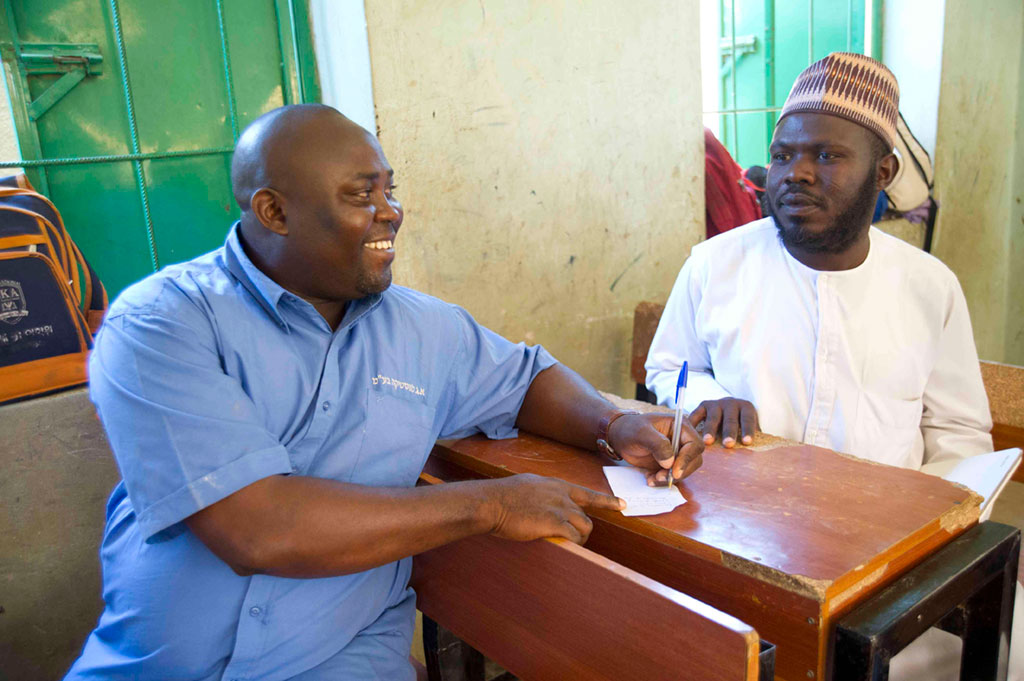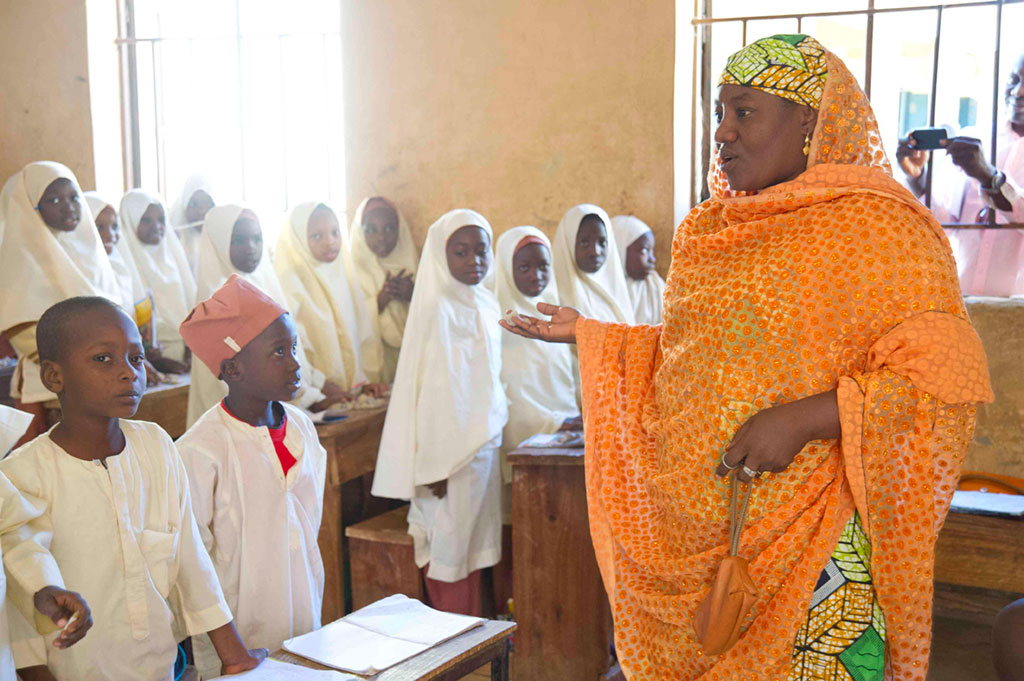Ahmad Ali loves teaching. In particular, he looks forward to the boys and girls in his afternoon classes in the Village of Gwallaga in Nigeria.
He describes them as special, unique and fortunate. They come from other communities that have been ripped apart by insurgents, forcing the children to flee to the safety in and around Bauchi.
The village is participating in a program that established a non-formal learning center to meet the educational and psychological needs of these internally displaced children.
“Well, there are lots of changes for them,” Ali says. “Some of them lost their parents, which made them afraid. They did not trust anyone, and also as a result of difficult situations that they found themselves, it sometimes becomes very much difficult to control them.”
Ali says during the time the internally displaced children spent together, along with the non-formal center’s support services, progress was made.
“As days passed, they came around,” he says. “We eventually talked and laughed together all the time.”
Ali and other teachers were selected to be trained as part of the Education Crisis Response program, an initiative of the U.S. Agency for International Development. Implemented by Creative Associates International in cooperation with the Nigerian government, community leaders and civil society organizations, it is designed to assist internally displaced children in northern Nigeria with access to literacy, math and life skills so that they can eventually reintegrate into the country’s formal school system.
Drawing teachers from local communities

To reach that goal, Education Crisis Response turned to the host communities themselves to find the teachers needed.
“We approached the community and asked, ‘Can you [identify any] trained teachers, retired teachers or anybody else,’” says Ayo Oladini, Director of the Nigeria Education Crisis Response. “Then we give a small aptitude test and are able to select one that would be a facilitator.”
The local teachers—also called learning facilitators and instructors—have a unique understanding not only of the local dynamics but also of the students’ needs. Because many of the youth have been traumatized during their forced displacement, the teachers receive additional special sensitivity training.
Promoting sensitivity & “do no harm”
“We work on the principle of ‘do no harm,’” Oladini says. “Before they even engage the children at all, we bring them in for orientation and training, largely to let them know that this is a school, granted, but it is a school with a difference.”
During the five-day training, teachers are taught how to create a friendly and welcoming learning environment for the often traumatized children, incorporating group activities and recreation, a break from the usually more formal lecture-type settings of most Nigerian classrooms.
The facilitators are shown techniques that create a student-centered environment, instead of relying on lectures, notes on the chalkboard and memorization.
Teachers in the 294 learning centers established by Education Crisis Response are also encouraged to invite local community leaders into their classrooms to emphasize messages of peace and tolerance.
Displaced for years in some cases, many students face extreme challenges for which teachers in the program must also be prepared.
Helping students catch up

“When these children came, we found out that most of them have lost a lot in education because most of them [have] stayed for two years without going to school,” says Jummai Dauda, a classroom instructor at the Sabon Kaura non-formal learning center in Bauchi. “When I started with them, most of them have forgotten almost everything they had been learning in their schools, because when they came, they cannot read, they cannot write.”
Teachers create support structures within the student groups themselves through pair and group work; students who are more advanced can serve as in-class mentors for those lagging behind.
It is important that Education Crisis Response facilitators teach in local languages with an emphasis on literacy. That emphasis, Oladini explains, provides students with more learning opportunities even after they leave the program.
“We now retrain these teachers on how to teach reading, with the hope that when you’re able to read, you’re able to comprehend,” Oladini said. “Then you can use that skill in other subjects and do very well.”
A community effort
To support its cadre of teachers, the program relies on local committees known as Community Coalitions to backstop each facilitator, help monitor attendance and provide basic supplies to students when needed. Local government education officials are also encouraged to pay regular visits to the classrooms and give feedback to the program that can then be used in future teacher trainings.
With more than 1.2 million people displaced by insurgents in Nigeria’s northeast, the needs are great. But for teachers like Dauda, evidence of the program’s success is everywhere.
Dauda, who has worked from the outset with students who were barely literate, said she measures success not only academically but also by the spirit of her students.
“When we started with them now, I can see many changes in them, because most of them can read now, and they can write,” Dauda said. “And almost all of them are happy being in school.”
Produced for USAID by Creative Associates International. Written by David Snyder, with reporting by Michael J. Zamba and Ernest Akoma in Nigeria.
